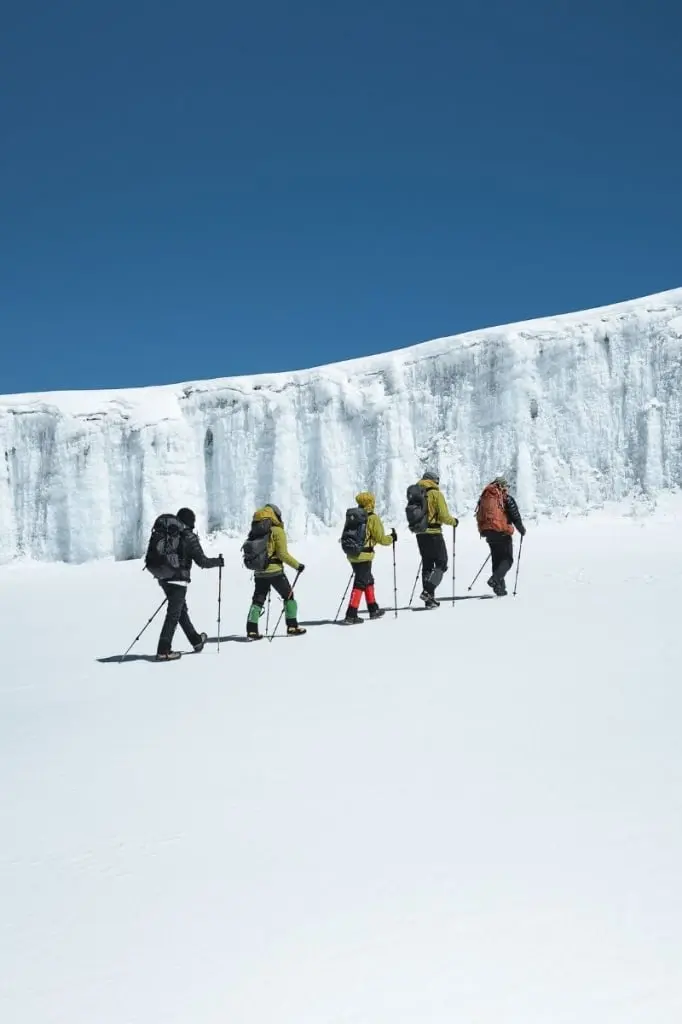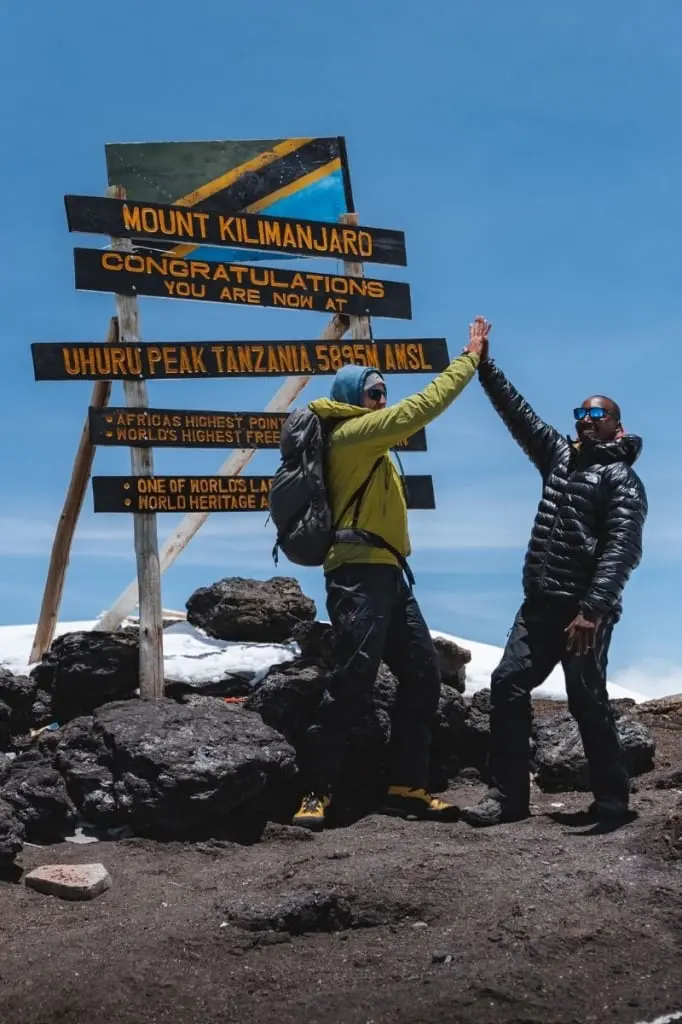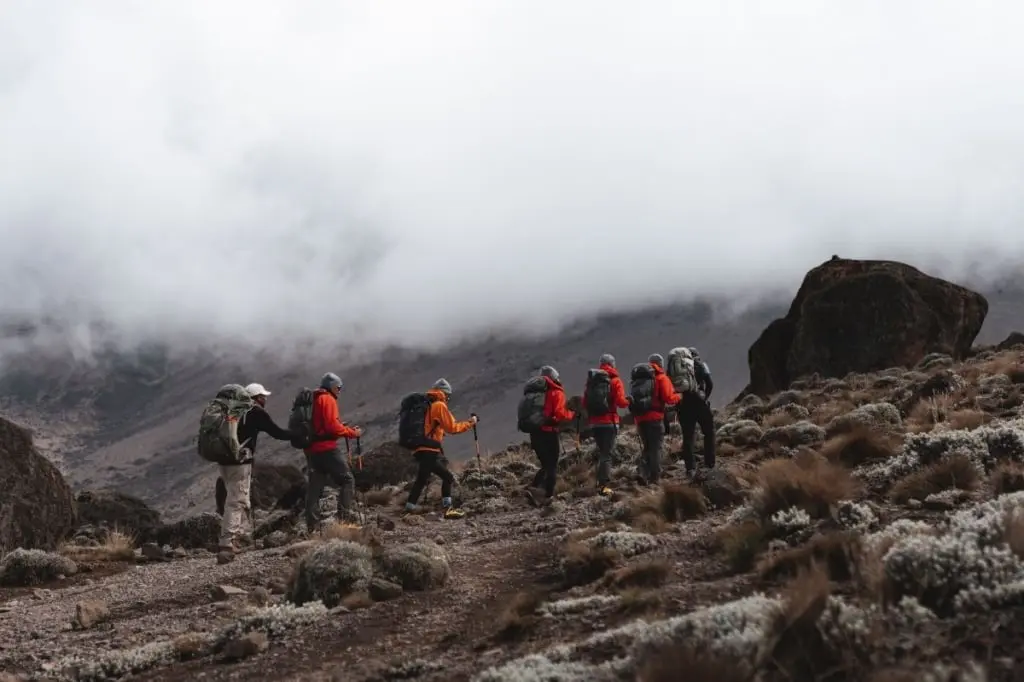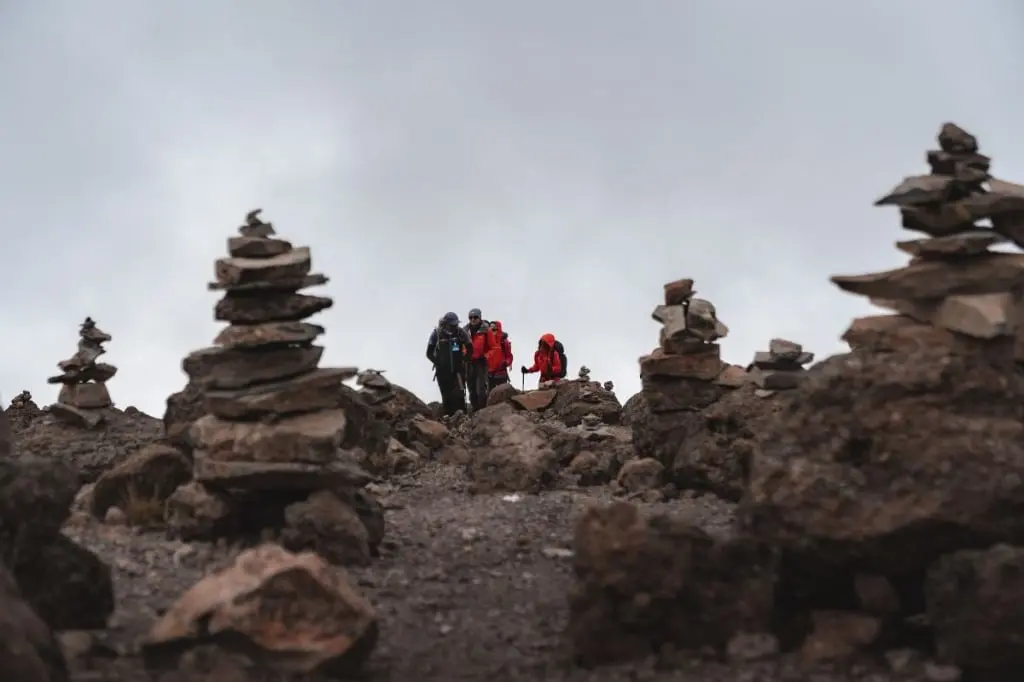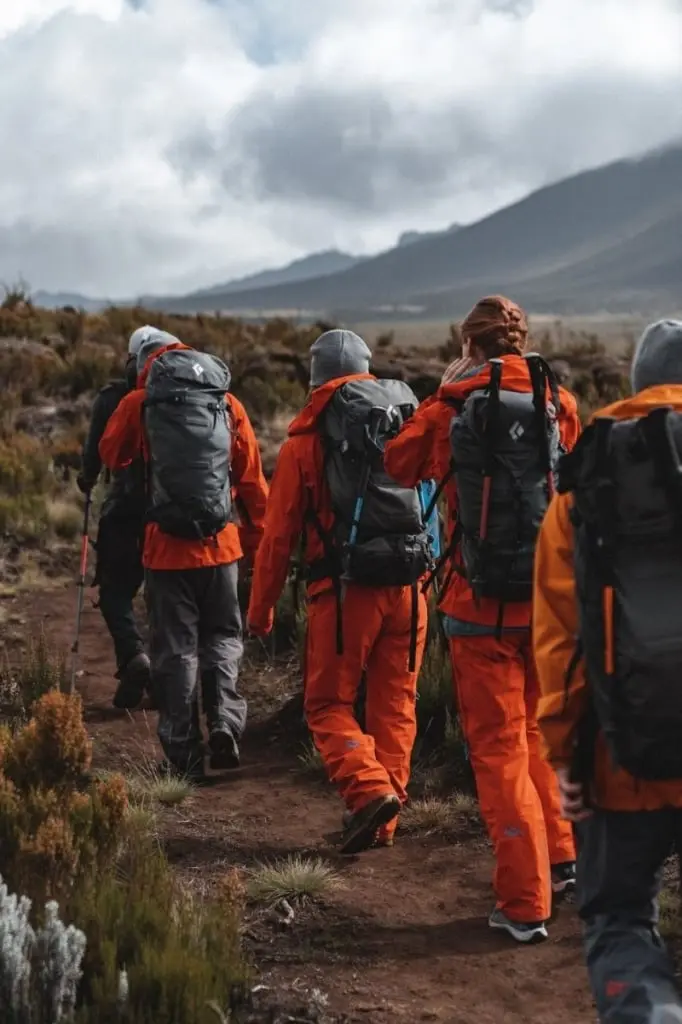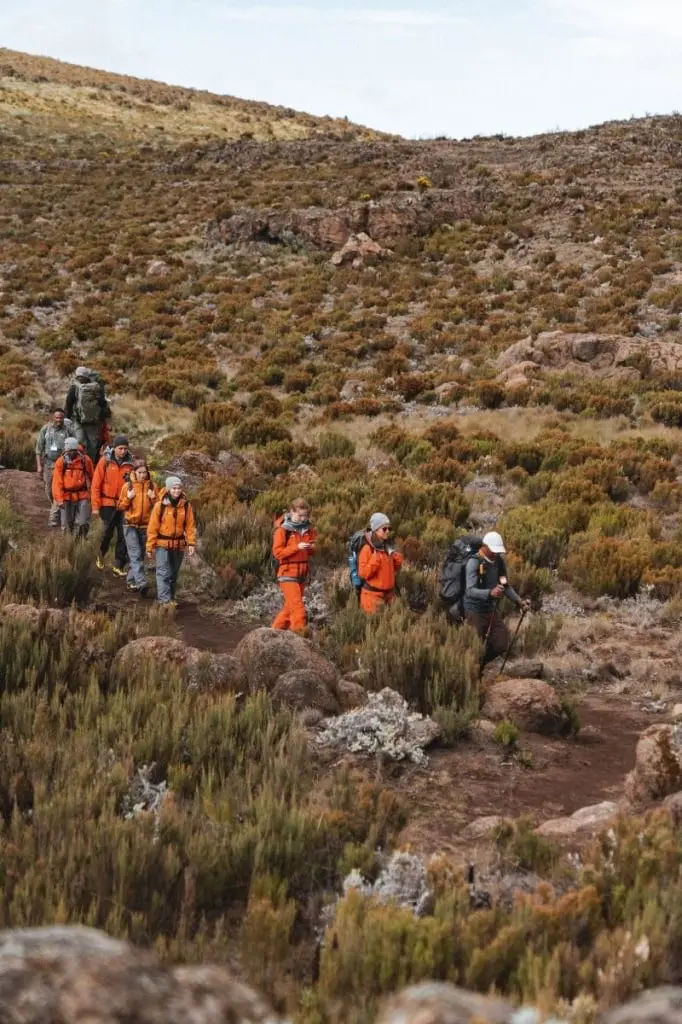Thousands of travelers fly to Tanzania every year to attempt to climb the highest point on the African continent, Mount Kilimanjaro (5.895 meters). Some of them return home without reaching the summit. This happens for a variety of reasons, but the main cause is due to poor altitude acclimatization.
On the internet, you can find hundreds of materials on this issue. Unfortunately, most of them resemble scientific articles, using terminology which is difficult for the average traveler to understand. In this article, we will try to explain in simple terms what high-altitude acclimatization is and what you need to do to make your acclimatization successful.
Please note: although we have successfully conducted thousands of expeditions to Kilimanjaro and have accumulated a wealth of experience in such matters, we are not doctors. The author of this article has a certificate of completion of training in the provision of medical care in mountain conditions, but I cannot give medical advice. Treat this information as a reference, and if you have concerns about your health before climbing, be sure to consult with your doctor.
What is high-altitude acclimatization in general?
As you make plans for Kilimanjaro, you will likely see or hear the phrase “high-altitude acclimatization” frequently. To be brief, high-altitude acclimatization refers to physical changes that occur in your body so that you feel better and your body can function well at increased altitudes.
A logical question is why do some climbers experience feeling poorly, physically, as they ascend into higher altitudes?
The thing is that the higher we go, the lower the atmospheric pressure becomes. As a result, the distance between oxygen molecules in the air we breathe spreads - there is not enough pressure to “hold” them together. As a result, with each breath, our body receives less oxygen than at the altitudes with which we are accustomed.
Oxygen is necessary for the proper functioning of the circulatory system, the brain and other life-sustaining functions.
If you reside at sea level, your body is accustomed to a certain concentration of oxygen. As you ascend Mt Kilimanjaro, the concentration of oxygen available gradually reduces until it is about 40% less than sea level at the final summit.
Note: The proportion of oxygen in the atmosphere as a whole (approximately 20%) is unchanged, whether at sea level or Kilimanjaro. This proportion is the combination of oxygen, nitrogen and carbon dioxide that make up our atmosphere.
Feeling a lack of oxygen, the body begins to actively adapt to new conditions. There are many physiological changes, of which the most significant are:
- the respiration rate increases. Our body tries to compensate for less oxygen in each breath by taking more frequent breaths, so that the total number of molecules received is approximately the same as your body is used to;
- the parts of the lungs that are usually “conserved” begin to turn on - our body has reserved them for such situations;
- the body begins to produce special enzymes that "squeeze" oxygen from the received hemoglobin and send it to the circulatory system, partially replenishing the supply;
- the number of red blood cells in our blood increases significantly. This allows available oxygen molecules to be delivered to vital organs at a faster rate.
This is how our body tries to bring the oxygen level back to the level we need. During daily medical examinations, our guides will measure your oxygen with a special device - an oximeter. Blood oxygen levels help our team understand how well your acclimatization is.
Allowable Oxygen Level
The normal level of oxygen in the blood(sometimes referred to as saturation) is between 95-99%. People suffering from chronic lung diseases or cardiovascular insufficiency may have figures between 92% -94%.
In the mountains, the situation changes and oxygen saturation may drop. During medical examinations, our guides will pay attention to the following indicators:
- Between 90% and 99% - excellent indicators! In the absence of other complaints, we can confidently say this climber is ready to continue the ascent;
- 80 - 89% - good indicators, which suggest that acclimatization is relatively successful, but you need to pay attention to the general well-being. Be sure to tell your guide if you have a headache, indigestion, nausea, or other discomfort. These may be the first symptoms of an onset of altitude sickness. Read more about altitude sickness below.
Inform your guide of any ailments, even insignificant ones. If you feel unwell - immediately inform your guide! His job is not only to guide you to the top of Mount Kilimanjaro, but also to ensure your safety.
All of our head guides have received special medical training in the mountains and are internationally certified Wilderness First Responders.
- 70% - 79% - this is a clear signal that something is wrong. Your guides will start asking questions in order to establish the reasons why acclimatization is not going appropriately and to ensure your health and safety.
This does not mean that you have to stop climbing and go down. The guides will do their best to keep you climbing. However, your health and safety remains our top priority. If there are no other complaints, the guides will let you breathe oxygen from a special cylinder. Paired with extra rest, this will raise your blood oxygen levels and help your body. The oxygen saturation will most likely be restored and you will be able to continue climbing.
If, in addition to low oxygen levels, you also have other complaints, the guides will offer you medicine for common mountain-climbing concerns.
- 65 - 70% - these levels are a serious reason to think that acclimatization has not occurred and the body does not have time to adapt to the altitude. Usually, such a low oxygen concentration is diagnosed during an evening physical. If, in addition to low oxygen saturation, the climber also has a severe headache, nausea and other symptoms of altitude sickness, the guides will put an oxygen mask on the climber and escort him or her to the nearest evacuation point. From there, the climber will be picked up either by car or helicopter. If needed, a stretcher can be used to carry the ill climber, instead of walking to the evacuation point.
Please note that some camps on Kilimanjaro cannot be reached by an evacuation vehicle or helicopter. From these locations evacuation is carried out on foot (or on a stretcher) until reaching the National Park exit.
The decision to evacuate a climber is always taken very seriously by our guides. We understand that for many, climbing Kilimanjaro is a once-in-a-lifetime dream, and is quite expensive. However, your health and life are priceless and there is no adventure or dream worth such risk.You can always return to Kilimanjaro and try again. Of the thousands of participants in our annual expeditions, several dozen are forced to stop climbing and turn down. Most of them return the following year and successfully reach the summit.
We understand how important it is for many to be on top, and we do our best to ensure that all participants achieve their goal. In our expeditions, we have selected the most balanced meal plans in the mountains, excellent equipment, and undergo daily medical examinations in the morning and in the evening all to help you achieve this goal. The guides help climbers find the right walking pace, carry bottled oxygen and do much more to ensure that all travelers reach Uhuru Peak (5.895 m).
If for some reason this does not happen, our company offers substantial discounts for everyone who wants to make a second attempt with us.
Therefore, if the guide believes that further ascent is dangerous, the best thing you can do is to descend following the instructions of the guide and start planning for a new expedition.
Mountain Sickness
If the body is experiencing problems with acclimatization to the altitude, it is necessary to urgently go down. As soon as the body receives more oxygen, the body will begin to recover and begin to return to normal. If you stay at a high elevation, then over time, you may develop a severe degree of altitude sickness. This is an extremely dangerous condition that occurs in the form of cerebral edema or pulmonary edema, and in especially difficult cases, both. If you do not evacuate the victim in time and do not provide medical assistance, complications can be fatal.
It is critical to distinguish the symptoms that accompany normal altitude acclimatization from the symptoms of altitude sickness. Altitude Sickness indicates that the climber is clearly unable to adapt to altitude and must be evacuated. The main indicator here is the level of oxygen in the blood.
The other indicators are considered by guides in aggregate. The following factors may indicate the onset of altitude sickness:
- Severe, persistent headache;
- Serious sleep disturbance, complete inability to fall asleep at night;
- Nausea and vomiting.
This may seem confusing, as these symptoms are the same as the usual acclimatization process. However, with proper acclimatization, the severity is less and symptoms should pass in a day, or less. One of the key tasks of our guides during the ascent is to determine the severity of symptoms and decide what to do next - let the expedition member breathe oxygen from a cylinder and support his/her body with special drugs, or if it is necessary to start evacuation.
Pulmonary Edema
Pulmonary Edema occurs when light-colored blood plasma builds up in the tissues of the lungs. When you try to inhale, the fluid foams and prevents the lungs from performing their function - to supply the body with oxygen. It is the most common of all mountain-related health issues and is perhaps the leading cause of death in the mountains.
Pulmonary edema occurs in three stages, each new stage increasing with intensity of symptoms.
The following symptoms indicate the first stage of pulmonary edema:
- The patient can stand on his/her feet, but movement is difficult, in some cases the patient cannot walk at all;
- There is no urination for a long time (8-12 hours);
- Breathing problems are present, the patient begins to cough dryly or clench his teeth while trying to inhale;
- Breathing intensifies and becomes more rapid
- The skin may become moist and pale;
- Lips, ears and nail beds may turn blue-ish
- Pulse increases noticeably;
- The patient tries to lie down, but cannot stay in a horizontal position for a long time;
- In some cases, the patient's temperature rises, indicating a fever.
If the patient does not descend to a lower altitude quickly and receive medical attention, the second stage of the condition will begin to set in.
Symptoms of the second stage of pulmonary edema include:
- Inability to stand, but also cannot lie down. Patient takes a half-sitting-reclining position. The patient may try to lie down, but begins to choke due to fluid in lungs and then sits up;
- A dry cough is replaced by a wet one. May cough up phlegm;
- Rapid pulse rate;
- The patient is constantly thirsty.
If the patient remains at the high altitude, after approximately 8-10 hrs the third stage sets in:
- A sharp, piercing headache;
- High temperature;
- Blood pressure rises - the upper arterial pressure reaches 150-170, and the lower - 90-100 mm Hg;
- Blood appears in the sputum that is coughed up and other discharge turns red;
- Breathing is difficult, wheezing from the chest is clearly audible;
- Pinkish foam begins to ooze from the nose and mouth.
If the victim is still at the height, after the third stage he falls into a coma.
Cerebral Edema
Cerebral Edema occurs because the amount of fluid in the capillaries of the brain decreases. As a result, the brain swells and grows in size. In advanced stages, the cerebellum begins to press on the spinal cord stem and destroys its vital areas.
Like pulmonary edema, cerebral edema occurs in three stages.
In the first stage , the following symptoms are observed:
- The head will feel like lead, acute “bursting” pains, and the brain seems to be cramped in the cranium;
- Frequent vomiting;
- The victim begins to experience coordination problems; walking as if intoxicated, the patient cannot walk along a straight line;
- The person becomes very apathetic, detached from everything that happening;
- The patient has difficulty answering questions and responding to requests from others.
The difference between cerebral edema and pulmonary edema is that the victim can be in a horizontal position.
If you do not descend, then in about ten hours the second stage of cerebral edema will set in, which is characterized by the following:
- Significant increase in severity of headache;
- The patient begins to behave strangely and does not understand what is happening; aggressive episodes, euphoria or bizarre behaviors may manifest. The patient may actively resist attempts to evacuate, threaten the team and other climbers.
- Over time, the consciousness is inhibited. The patient may fail to recognize members of the climbing team or have other cognitive delays.
Next is the third stage, which is marked by:
- The pupils of the eyes dilate and there is no reaction to light;
- The patient periodically loses consciousness, and, upon regaining consciousness, behaves irrationally and confused;
- The limbs become numb and lose sensitivity;
- The headache increases in severity.
As in the case of pulmonary edema, after the third stage, the victim falls into a coma.
All of Altezza Travel guides have received training for suspicion of pulmonary edema or cerebral edema, including appropriate response and treatment for client’s safety.
Our guides are pro-active and work from a framework of prevention. If a climber with Altezza Travel begins to feel unwell, we do not allow the situation to ever get so poor as to reach even the first stage of pulmonary or cerebral edema. As soon as it becomes clear that a climber is feeling unwell as a manifestation of altitude sickness, and not the expected discomfort that accompanies the normal process of high-altitude acclimatization, we ensure the ill climber is escorted down to the nearest evacuation point. From there the victim will be picked up by a special evacuation vehicle or helicopter. This is why our regular medical checks performed twice daily are so important.
What happens after someone is evacuated? They will be taken to the regional hospital in the area; KCMC Hospital in Moshi. This is one of the most modern hospitals in all of Southeast Africa, whose specialists are constantly faced with "mountain" diseases. Here, a team of experienced medical doctors will treat the patient and oversee their care.
On our expeditions, such situations happen very rarely. Twice a day, the team conducts mandatory medical examinations, during which all ailments are identified. With the help of oximeters, the guides regularly measure the oxygen level in the blood of the expedition members. We also carry an unlimited supply of bottled oxygen and can always “adjust” the level to make acclimatization easier. It is precisely because of our attention to client’s health from the very beginning of each expedition, and being proactive about acclimatization that those who climb with us rarely experience health problems on the mountain.
Our guides are very attentive to monitoring the health of climbers on Kilimanjaro. Over the past year, more than 2000 people have conquered the highest peak in Africa (5.895 m) with the Altezza Travel team. For various reasons, about a hundred participants did not reach the top. The descent was organized in a timely manner, and not a single one had delayed treatment to allow for the onset of a life-threatening situation such as cerebral or pulmonary edema.
The number of unsuccessful ascents is also undoubtedly influenced by the fact that many travelers go ascents in couples, and when, for example, the husband decides to go down, the spouse usually decides to go with him, although she may have been able to successfully reach the summit.
The main rules for successful acclimatization
Due to our recommendations, the vast majority of participants who climb Kilimanjaro successfully acclimatize to altitude. Some do not feel anything at all, while others adapt with minimal discomfort in the first days of the expedition. Some discomfort is normal and is why our guides perform regular health check ups. A climber may feel uncomfortable, but based on oximeter readings and other symptoms, be acclimatizing appropriately.
In order to successfully adapt to altitude, it is important to remember the following simple, but very important rules of acclimatization:
Choose routes lasting seven days or more. As we explained above, during acclimatization, many processes take place in the human body, and in order to successfully adapt to altitude, the body needs two things - time and energy.
As practice shows, six days to the top (this is how much time it takes to climb to the top of Kilimanjaro on seven-day routes; the additional day is needed for the descent) is sufficient for most travelers. Transitions on such programs are rather moderate, especially for the first days of the trek. Upon arrival at the camp, participants in the seven-day climb will have significantly more time to rest and recover than those who chose the six or five-day program to conquer Kilimanjaro.
It is for this reason that most of our group ascents of Kilimanjaro are seven-day routes. They are well suited for both beginners and experienced climbers without high-altitude acclimatization.
Travelers who haven't played sports for a very long time or just want to take the route at a more relaxed pace are advised to pay attention to the eight-day routes (which are seven days of climbing up Kilimanjaro, and an additional day for descent).
Visitors to our site may be confused by the published 5- and 6-day programs. We publish them for experienced mountain hikers who have already gained acclimatization before visiting Kilimanjaro and who do not need to worry about the body taking longer to adapt to the high altitude.
Another option for acclimatization is to tackle Mt Meru first, Tanzania’s second-highest peak (4566 m). After summiting that mountain,you can safely choose a five-day program on Kilimanjaro, because your body will be sufficiently prepared for the altitude, despite the shorter route.
Drink more water! Your body uses a lot of water when climbing a mountain, not only because of physical exertion, but also to perform the additional functions to adapt to the higher altitude. It is important to constantly replenish the supply of water in your body - climbers on Kilimanjaro must drink at least 3-4 liters of water per day.
We recommend drinking a liter and a half during the transition from camp to camp and “finishing off” the rest upon arrival. It is better to drink in small sips, but more often. During the trek, our guides will make a rest stop every 25-30 minutes and remind climbers that it's time to take a couple of sips of water.
Eat well. The body needs a lot of energy to successfully acclimatize. For this you need to eat well. Food for the expedition members is prepared by our team of mountain chefs. They offer a variety of hot meals and drinks for breakfast, lunch and dinner. We designedour mountain menu to be tasty and balanced. Every day, chefs will offer a delicious selection of cereals, chicken, beef, eggs, spaghetti, vegetables, fresh fruits, soups and more.
In general, the mountain menu is a matter of special pride for Altezza Travel! We have trained our team of chefs for a long time, and we are very pleased to hear from clients that in the Altezza Travel camp they always ate better than the other climbing teams at the same camps. You can read reviews about our expeditions here.
Unfortunately, sometimes new climbers find that their appetite disappears on the mountain. Even so, the body needs energy, and you have to force yourself to eat.
Walk high - sleep low. This is a well-known mountaineering saying that underlies the so-called “step” acclimatization. Indeed, the body adapts better if the daytime transition takes place at an altitude, and climbers sleep at a slightly lower elevation than which they trekked during the day.
You do not need to worry about following this principle - the guides will regularly take you to acclimatization points. We have already mapped out each route and know the specific acclimatization profile, we just ask that you trust us and participate in additional brief hikes after reaching camp. You will climb to a higher point and then return to camp for a rest. As much as you would like to miss the acclimatization hike after the day's hike, be sure to participate in them! As practice shows, for everyone who goes on acclimatization hikes the process of adaptation to altitude is much faster than for those who do not.
Take your time. The slower your climbing pace, the better for the body. It is better for your body to spend more resources on acclimatization rather than recuperating after brisk walking. Ideally, you should walk two to three times slower on the slopes of Kilimanjaro than you would normally walk down the street at home.
Guides and porters will constantly repeat the phrase “pole-pole”. In Swahili it means "slowly". This is one of the best tips for a successful ascent of Kilimanjaro - as practice shows, almost all climbers who take a measured pace from the very beginning of the expedition successfully acclimatize and reach Uhuru Peak (5.895 m) without any difficulties.
Follow these simple rules, and do not hesitate to talk about your health at morning and evening medical examinations. Listen to the advice of Altezza Travel guides and your ascent to Kilimanjaro will be successful!
If you still have any questions about high-altitude acclimatization or about climbing Kilimanjaro in general, drop us an email! Our managers will be happy to answer all your questions.












